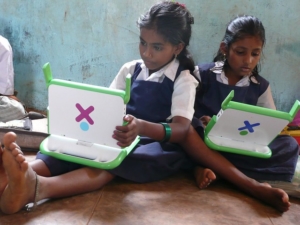Edtech in India Helps Improve Education

Education Technology, also known as EdTech, is a current driving force for major improvements to education in India. The information and communication technology placed in school systems throughout the country helps bring outside knowledge to classrooms that would have been previously inaccessible. Edtech has recently dropped in pricing, making the equipment and technology easily accessible in less developed areas and easier to implement in impoverished schools.
Four Key Facts About India’s Educational System
- India has one of the largest populations of school-age children, with an estimated 270 million children between the ages of 5 to 17.
- The country has four main levels for education: pre-primary from ages 3 to 6, primary from ages 6 to 10, secondary from ages 11 to 17 and tertiary from ages 18 to 22.
- Children must attend school from ages 6 to 13.
- School systems have seen a major increase in student enrollment in recent years, with a 15.37 percent increase of total gross enrollment in secondary education between 2009 and 2016.
While enrollment has increased, education in India is still behind with teaching methods and test scores. Many students test poorly in math and reading skills and teaching quality decreases in rural areas. In 2015, the mean achievement scores for math at a national level for rural areas was 247, while the urban score was 256. Urban areas also scored 19 points higher in English, with a mean score of 263. With less access to teachers and educational materials, the rural school systems face more deficits than urban areas.
Education technology is a relatively new concept for foreign countries, but the benefits to technology-infused classrooms are well known. Below are three benefits of increasing EdTech usage in Indian school systems.
Three Benefits of Increasing EdTech Usage in Indian Schools
- EdTech Bridges the Gap Between Rural and Urban Education: EdTech incorporates text, audio and video to teach and elaborate on classroom subjects. This technology fills in knowledge gaps when teachers are absent or less educated with certain materials. The language in these materials is also more streamlined, making topics easier to understand for a multitude of students. Video lessons make classes more consistent in all schools, eliminating the variation of teaching materials around the country. These programs also make student data more accessible to teachers, with some methods collecting and compiling data on student progress for teachers to be able to track progress and note areas that need improvement.
- EdTech Programs Emphasize Specialized and Individual Learning Plans: Education in India has previously been less effective at aiding students individually; through the implementation of EdTech, schools are better able to cater to students’ needs and adapt specific programs to better suit individual learning styles. Mindspark, an Indian based company that delves into education through videos, games and questions, is working to pique students’ interest in non-traditional ways. The software takes the basic values of comprehension for each student and adapts lesson plans to better fit their needs. The company recently worked with over 600 students in Delhi, citing increases in understanding of math and Hindi.
- EdTech Forms a Collaborative Space for Education: As more teachers begin to incorporate the newer technologies into the classroom, lesson plans will become more consistent in each region. Teachers will also be able to share effective teaching strategies using newer technology to benefit classrooms with less access to EdTech. This technology also makes information about students’ success more accessible to parents. Automated messaging to parents regarding progress can increase test scores for students overall.
While Edtech is benefitting education in India, foreign investments heavily fund the current ventures. Further development into education technology would require extensive partnership with the government, but some are taking steps to bring more technology into Indian classrooms. Prices for tablets and computers have decreased in recent years, making these educational programs more accessible to the multitudes. Many state-run schools have some access to these newer programs, and India is making more strides towards providing EdTech for students in all regions.
– Kristen Bastin
Photo: Flickr
